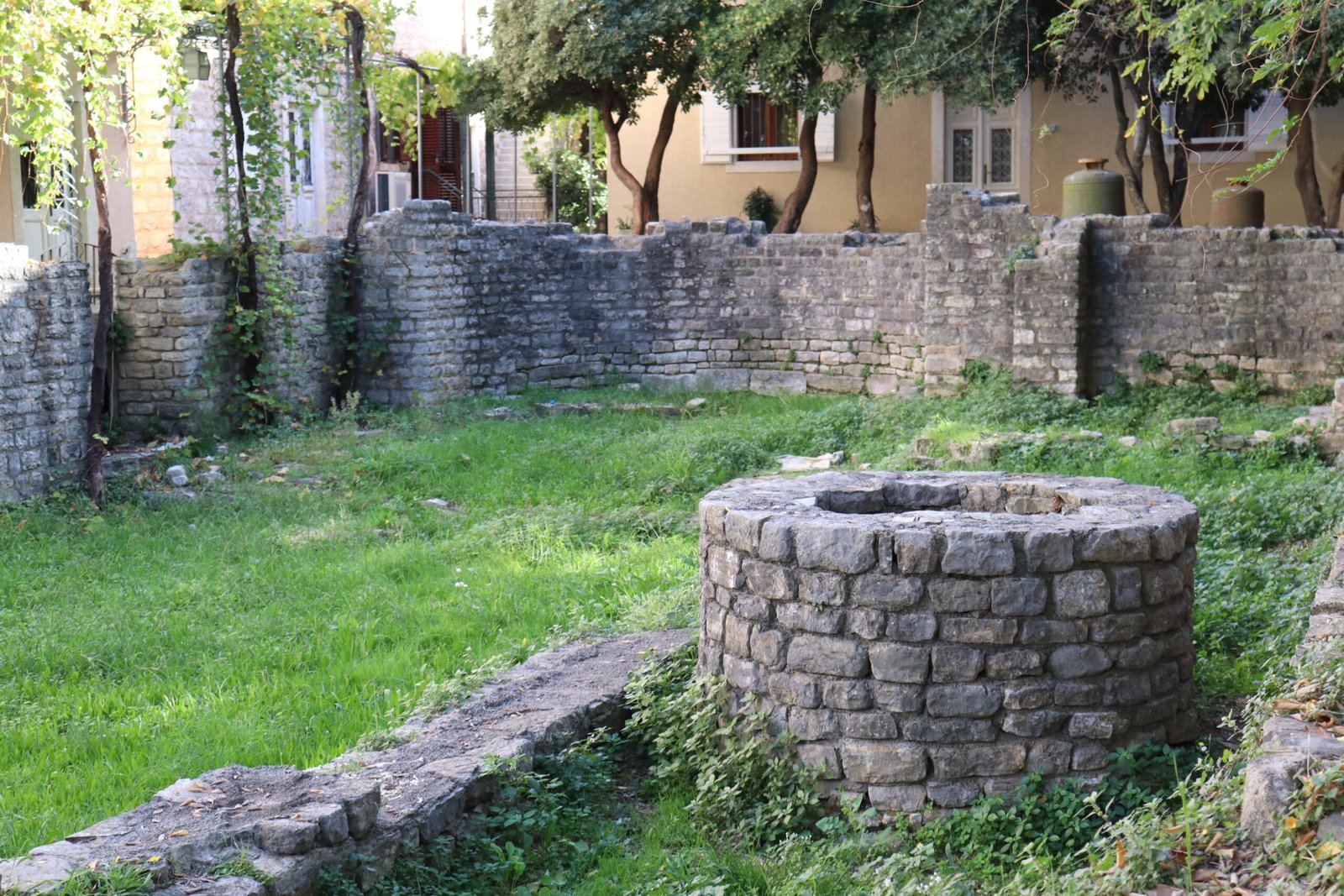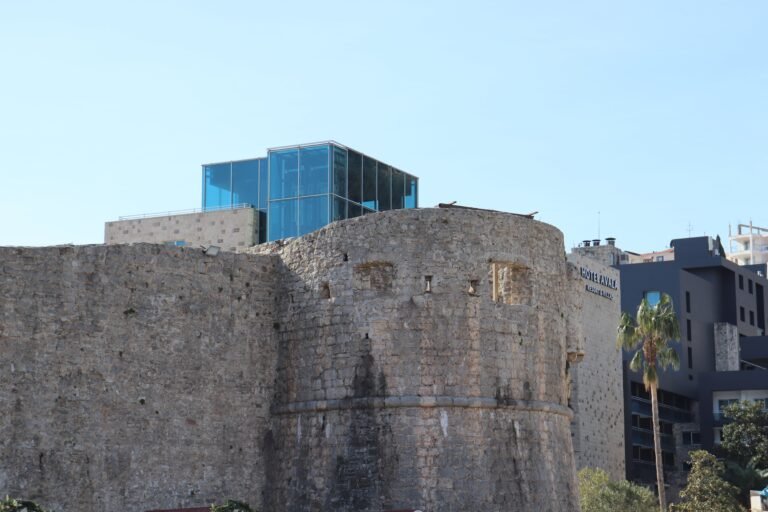U istraživačkim radovima iz 1987, u najstarijem dijelu Starog grada Budve otkriveni su zidovi trobrodne ranohrišćanske bazilike sa polukružnom apsidom i transeptom. Sjeverni brod i sjeverni dio transepta bazilike zalazio je ispod biskupskog dvora, dok je južni dio transepta zalazio ispod potpornog zida, ispred austrougarske kasarne. Istraživački radovi na ranohrišćanskoj bazilici nisu izvršeni do kraja, ali je poznato da ispod bazilike postoje stariji slojevi iz rimskog perioda. Tokom iskopavanja otkrivene su baze stubova i kapiteli koji su nekada pripadali srednjem brodu građevine, a značajnije otkriće predstavlja budvanski kivorij, neobično velik i bez neposredne analogije u svom okruženju. Interesantno otkriće predstavljaju fragmenti podne mozaičke dekoracije iz apside i naosa a koji se datuje u VII vijek. Rekonstruisana mozaička dekoracija može se sagledati u prostorijama Muzeja Budve.
Early Christian Basilica, 5th-6th century
During the 1987 research, in the oldest part of the Old Town of Budva, the walls of a three-nave early Christian basilica with a semicircular apse and transept were discovered. The northern part of the transept of the basilica went under the bishop’s palace, while the southern part of the transept went under the retaining wall, in front of the Austro-Hungarian barracks. Research work on the early Christian basilica has not been completed, but it is known that under the basilica there are older first layers from the Roman period. During the excavation, the bases of the columns and capitals that once belonged to the middle nave of the building were discovered, and the most significant discovery is the ciborium, which is unusually monumental and has no direct analogy in its surroundings. An interesting discovery is represented by the fragments of the floor mosaic decoration from the apse and nave, which dates back to the 7th century. The reconstructed mosaic decoration can be seen on the premises of the Budva Museum.





